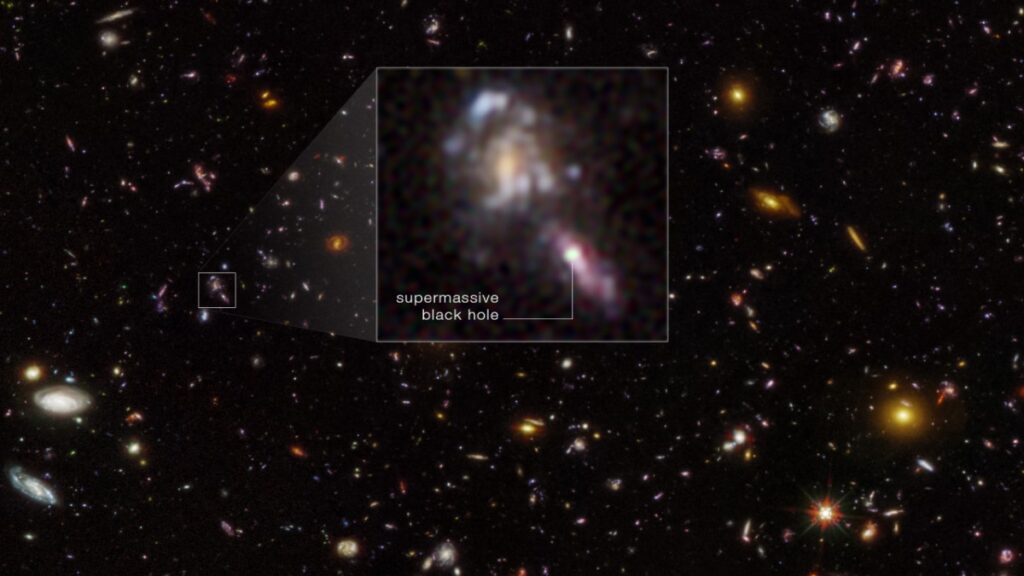# Major Discovery Unveiled: Hubble Telescope Reveals Unexpected Black Holes in Early Universe
An astounding breakthrough has been achieved by an international team of researchers, spearheaded by scientists from Stockholm University’s Department of Astronomy. Utilizing the extraordinary capabilities of the NASA Hubble Space Telescope, this team has unearthed a remarkable increase in the number of black holes present in the early universe, surpassing previous records. The discovery of black holes nestled within faint galaxies that emerged shortly after the epochal Big Bang event holds tremendous implications for our comprehension of how supermassive black holes came into existence and the pivotal role they play in the evolutionary trajectory of galaxies. The foundation of this groundbreaking research lies in the meticulous observations conducted by Hubble over several years in the enigmatic Ultra Deep Field region.
## Revelation of Supermassive Black Holes Nestled in Remote Galaxies
Among the plethora of revelations brought forth by this pioneering study, one of the most striking findings is the identification of supermassive black holes residing at the core of multiple galaxies that took shape less than a billion years post the Big Bang. These enigmatic entities exhibit masses comparable to billions of suns, a magnitude far exceeding the initial projections of scientists. Alice Young, a dedicated PhD student from Stockholm University and a co-author of the study featured in The Astrophysical Journal Letters, underscored the profound implications of these discoveries. According to Young, these colossal black holes either materialized as immensely massive entities or underwent rapid growth during the formative years of the universe.
## Unveiling Black Holes through Fluctuations in Luminosity
The ingenuity of the research team manifested in their methodical re-capture of images of the same region across multiple years using the Hubble Space Telescope. This strategic approach enabled them to discern fluctuations in the brightness of galaxies, serving as discernible signals of black holes flickering amidst the act of engulfing material in episodic bursts. Matthew Hayes, the lead author of this transformative research and a distinguished professor at Stockholm University, elucidated that these findings play a pivotal role in enhancing our comprehension of the intricate dynamics governing the growth and interaction of both black holes and galaxies over the expanse of time.
## Implications for Unraveling the Enigma of Galaxy Formation
The profound insights gleaned from this research shed light on the plausible origins of black holes, indicating that these colossal entities likely arose from the collapse of massive stars within the primordial billion years of the universe’s nascent existence. These findings serve as a clarion call for a deeper elucidation of the evolutionary trajectories of black holes and galaxies, offering a pathway towards constructing more precise and refined scientific models that depict their intertwined evolution.
In conclusion, the revelation of an augmented population of black holes in the early universe presents a watershed moment in the realm of astronomical research. The pioneering work of the team led by Stockholm University’s Department of Astronomy, in collaboration with NASA’s Hubble Space Telescope, unravels the mysteries shrouding the formation and evolution of supermassive black holes, unveiling a tapestry of cosmic marvels waiting to be untangled by the relentless pursuit of scientific inquiry.

